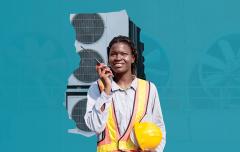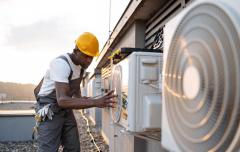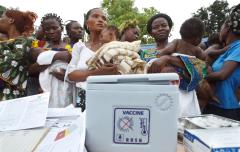Staying cool – without warming the planet
The late Mr Lee Kuan Yew once famously declared that air conditioning was “perhaps one of the signal inventions of history” as far as Singapore was concerned. “It changed the nature of civilisation by making development possible in the tropics,” he said, because it helped increase efficiency as offices, factories and schools became cool instead of stifling.
It is not by chance that Singapore is called the “air-conditioned nation”.
But while air conditioning can be a blessing for many, it can also be a curse when it comes to climate change – the threat of which has become even more evident with two extraordinarily intense storms recently – Typhoon Mangkhut in Hong Kong and the Philippines and Hurricane Florence in the US.
Access to cooling, which enables healthy and productive lives, represents a fundamental issue of equity in South-east Asia. Those without cooling access are suffering greatly.
In July, hundreds in Vietnam were hospitalised because of an intense heatwave. This followed record high temperatures in Cambodia, Laos and Thailand over the past two years.
The lack of associated cooling technologies also threatens populations in the region’s poorer countries, such as Cambodia, Laos and Myanmar, which account for many of the 36 million people in South-east Asia living below the poverty line. Children are at risk of dying due to a lack of refrigerated vaccines. The absence of cool storage facilities for food raises the threat of malnutrition and reduces rural incomes as farmers fail to bring crops to markets in time.
Heat threatens not only lives but economic productivity. A study by Verisk Maplecroft, a global risk consultancy, predicts South-east Asia will experience a 16 per cent decrease in labour capacity, the biggest decline in the world, over the next three decades due to heat-related causes.
While parts of rural South-east Asia struggle to install adequate cooling systems, air-conditioning usage has soared in the region’s rapidly expanding cities, part of a global trend where ownership of air-conditioning units doubled from 1990 to 2016. During this period, Chinese air-conditioner ownership went from almost zero to nearly one per household. This pattern is now being replicated across South-east Asia.
Unfortunately, many of the units are being purchased by consumers of modest means who are understandably price sensitive. The cheapest units are usually the least energy efficient and collectively consume enormous amounts of power – more than half peak demand in many hot climate cities, such as Mumbai.
Much of this power is from fossil fuels and releases greenhouse gases with high global warming potential, exacerbating climate change.
According to a recent analysis by the International Energy Agency, the power required to operate existing air conditioners is responsible for about 12 per cent of carbon emissions. Barring significant improvement, this share will triple by 2050. We face the prospect of a vicious circle where a warming planet creates the need for more cooling that in turn results in more global warming.
Solutions will need to be found on many fronts. A recent report, Chilling Prospects: Providing Sustainable Cooling For All, recently issued by the United Nations-affiliated Sustainable Energy for All highlights this complex array of challenges and offers some initial steps towards solutions.
The first step is much greater recognition of the problem; the need for access to cooling has surprisingly received little global attention, even within the development community.
Helping manufacturers make air-conditioning equipment much more energy efficient and offering financial schemes to help consumers buy more expensive cooling systems with much lower greenhouse gas emissions is an urgent priority. Systems purchased today will be in operation for a decade or longer, complicating efforts to meet the Paris Agreement goal to limit global warming to below 2 deg C by 2030.
Cities around the world are finding that changes in building design, or low-tech solutions such as the use of less heat-absorbing lighter coloured roofing and paving materials and strategic planting of trees, can also lower urban temperatures and reduce the need for cooling. Singapore is a prime example of how a “garden city” can help in achieving these goals.
But the biggest test case for South-east Asia is Indonesia, the region’s most populous country. More than 97 per cent of the country’s 261 million people have access to electricity, which enabled the purchase of over 17 million air-conditioning units in 2015, and the number is projected to grow more than 10 per cent annually.
To prevent Indonesia becoming a major source of carbon emissions due to widespread air-conditioning use, efforts should be made to accelerate implementation of minimum energy standards and promote green building codes and other measures. Jakarta should also develop a national sustainable cooling plan and look at options and opportunities for installing district cooling.
Another important step would be regional support to ratify the Kigali Amendment to the 1987 Montreal Protocol, which was highly successful in curbing the use of ozone-destroying chlorofluorocarbons (CFCs) used in refrigeration and air conditioning. But the CFCs were replaced by hydrofluorocarbons (HFCs), which while ozone-friendly, are nonetheless powerful climate warming gases.
Most nations in 2016 endorsed the Kigali Amendment, which enters into force next year. This aims to cut the production and consumption of HFCs by more than 80 per cent over the next 30 years and replace them with environmental-friendly alternatives.
South-east Asian countries were among the supporters of the amendment. Forty-eight countries have formally ratified the amendment to make it legally binding on themselves effective Jan 1, 2019, but only one South-east Asian nation, Laos, has done so.
SINGAPORE’S ROLE
Ratification makes developing countries eligible for financial support and would help spur countries in the region to promote the simultaneous replacement of HFCs and needed improvement in the energy efficiency of cooling systems. This is happening globally but needs to be accelerated and more closely integrated with climate action plans on a national level.
Technological innovation is also beginning to address the needs of the rural poor for chilling vaccines and providing a cold chain to reduce food loss and allow transport to urban markets. As a test bed for advanced technologies, Singapore can play a leading role in developing these technologies that would benefit the rest of the region.
Access to cooling needs to be understood as an increasingly urgent priority to prepare for a warming world, and not simply as an issue of comfort. For millions of people in South-east Asia, it is a matter of survival.
Alan Miller, a former climate change policy specialist at the World Bank, is co-author of Chilling Prospects: Providing Sustainable Cooling For All, issued by the UN-affiliated Sustainable Energy for All.
SEforALL note: This article first appeared in The Singapore Straits Times and can be found here





